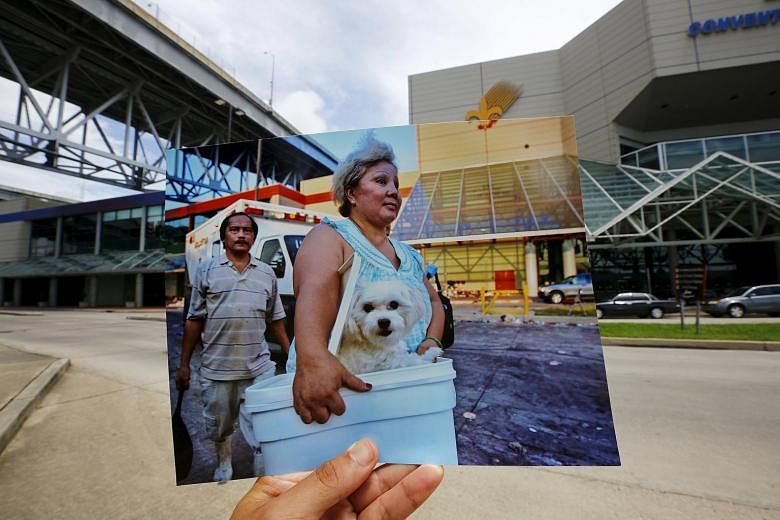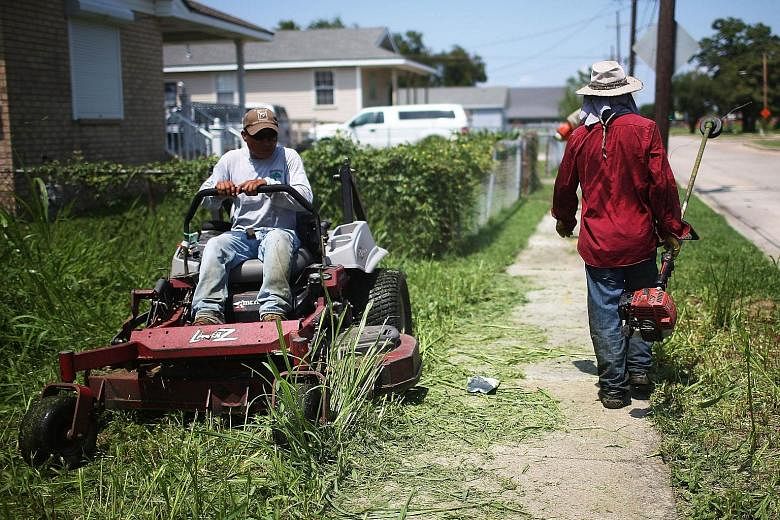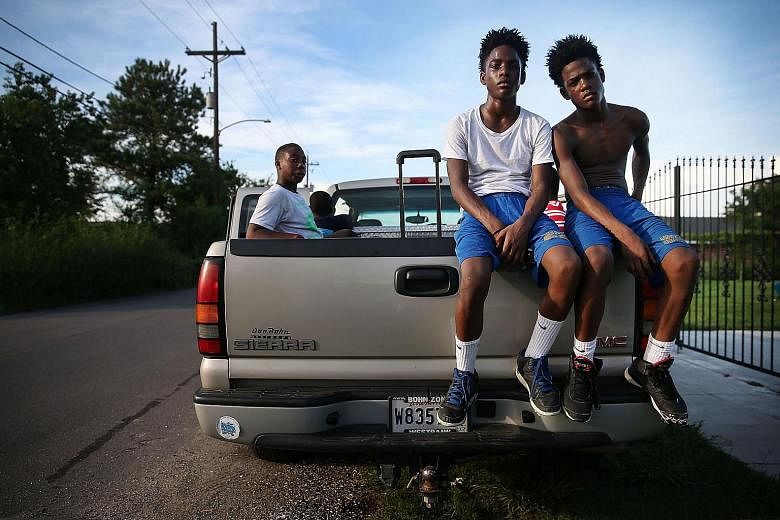It has been 10 years since Hurricane Katrina slammed into the United States with such fury that it broke levees in the city of New Orleans and caused widespread death and destruction.
The storm struck the Gulf coast of the United States early on the morning of Aug 29, 2005. The category 3 storm brought winds clocking in at up to 280km/h and spanned a 200km stretch of coastline, battering the states of Louisiana, Mississippi and Alabama.
But the worst hit city was New Orleans. The levees protecting the low-lying city broke and caused widespread flooding.
President Barack Obama is scheduled to visit the city on Wednesday (Aug 26) to commemorate the anniversary. So too is former President George W. Bush, whose administration was slammed for incompetence in the aftermath of the disaster.
Here are five things about the hurricane.
1. Hurricane Katrina is the third deadliest storm in US history.
Nearly 2,000 people were killed in the storm. The highest death toll from a hurricane in US history is Galveston in 1900, which claimed between 8,000 and 12,000 lives. The second deadliest storm happened in Okeechobee in 1928 and killed between 2,500 and 3,000 people.
2. It is the most expensive natural disaster in US history.
More than 100,000 homes were destroyed in New Orleans alone when 80 per cent of the city was flooded. Hundreds of thousands of people were displaced from their homes across the three states that the storm hit.
More than a million homes and businesses were damaged or destroyed.
In total, experts estimated that Katrina caused US$135 billion in damages.
According to research organisation The Data Center, out of US$120.5 billion in federal spending, about US$75 billion went into emergency relief in the aftermath of the disaster.
3. The levees protecting New Orleans were badly built.
The levees were built under the supervision of the US Army Corps of Engineers, a federal agency tasked with the job after Hurricane Betsy flooded New Orleans in 1965. However, the Corps made poor choices, including some cost-saving measures which resulted in short-term savings for taxpayers but long-term costs for the population when disaster struck.
The Corps admitted their failings in a report issued more than six months after Katrina, where it shouldered the blame for the levees' breaking. The Corps admitted that the levees were haphazardly built, partly due to lack of funds, and designed based on outdated information which resulted in a system of levees that failed to hold back the floodwaters.
4. The storm prompted the biggest evacuation in US history.
Some 1.3 million people left Louisiana and 400,000 were evacuated from New Orleans. But tens of thousands of people simply could not afford a car, or even the bus fare, to leave the disaster area.
Some 67 per cent of New Orleans' population was black, and an estimated 30 per cent lived in poverty. The storm thus had a disproportionate effect on the poor, African-American populace.
Louisiana governor Kathleen Blanco declared a state of emergency on Aug 26, 2005, three days before the storm made landfall, and asked the federal government for aid. One of the requests was to FEMA (Federal Emergency Management Agency) for 700 buses to aid in evacuation.
Aid however was slow in coming and the federal government's inadequate responses - then President Bush was holidaying in Texas when the storm hit - led to public outrage and Mr Bush's approval ratings nosedived after the storm.
5. The storm appears to have deepened racial divides, 10 years on, in New Orleans.
A survey conducted by the Public Policy Research Lab at Louisiana State University found that there was a racial divide in the perception of New Orleans' recovery. While nearly four in five white residents said that the city has mostly recovered, nearly three out of five blacks said it has not.
According to a New York Times report, the survey said that more than a third of African-Americans found life has gotten worse since Hurricane Katrina.
The hard truth was that African-Americans were likelier to be living in the flood-hit areas and, hobbled by poverty, found it harder to recover from the devastation caused by the floods.
Beyond racial divides, the city has yet to fully recover. Its population fell from 484,674 by more than half at an estimated 230,172 after the storm. By July 2014, it had yet to reach pre-Katrina levels with 384,320 residents.










